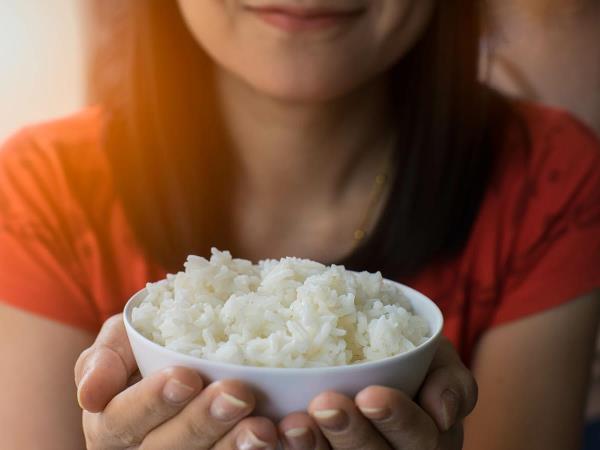However, not all rice varieties are the same. Red and black rice behave completely differently. They contain substances that can even help prevent diabetes. And this is where a simple, homemade solution lies: you don't necessarily have to eliminate rice from your diet, just choose the right type.
Diabetes, a Problem of Our Time
According to the International Diabetes Federation (IDF Diabetes Atlas, 2023), there are currently 537 million adults worldwide living with diabetes. If the trend continues, by 2045 this number is projected to reach 783 million, with at least as many people having prediabetes, a condition where blood sugar is already high but diabetes has not yet developed.
This means that almost one in five adults is directly at risk. And this is where diet comes into play, as it can significantly alter the course of the disease.
Why White Rice Isn't the Best Choice?
White rice is a staple in many cultures as it is cheap, filling, and quick to prepare. However, research is clear. A large analysis in the British Medical Journal (2020), involving over 350,000 people from Asia, Europe, and the U.S., showed that regular consumption of white rice increases the risk of type 2 diabetes by 55% in those who eat it the most.
The reason is that during the milling process of white rice, the outer husk where fibers, vitamins, and minerals are stored is removed, leaving almost pure starch that quickly converts to sugar in the body.
Black and Red Rice, Protection Instead of Risk
Fortunately, there are two types of rice that behave quite differently: black and red rice.
A study by the Thai medical University of Phayao (2021) showed that black and red rice not only do not spike blood sugar as quickly as white rice but also help regulate it. In an experiment on laboratory animals, scientists found that extracts from these rice varieties lower:
- blood sugar levels,
- triglycerides (fat in the blood that increases the risk of heart disease),
- cholesterol.
What's Inside This Rice?
The difference lies not only in color but also in composition.
- Polyphenols and flavonoids: these are plant substances that act as antioxidants, protecting cells from damage caused by free radicals (harmful molecules linked to aging and diseases).
- Gamma-oryzanol: a substance that helps regulate blood fats and reduces cholesterol levels.
- Anthocyanins: pigments that give black rice its distinctive color. They are potent antioxidants and have been shown to improve the body's insulin sensitivity.
- Proanthocyanidins: another group of antioxidants found mainly in red rice, which help lower triglycerides.
Real-World Example: Japan and Korea
In Asia, where rice is a daily staple, the differences between rice varieties have long been known. In Japan, a program was conducted between 2020 and 2024 where a mixture of white and black rice was introduced into school meals. The result: in children who ate this mixture, blood sugar levels after meals decreased by 18% compared to those who only ate white rice.
In Korea, from 2022 to 2025, there has been a noticeable increase in interest in red rice. According to the Korean Ministry of Health, consumption has increased by 30%, and it was observed that people who regularly consumed it were less likely to develop prediabetes.
How You Can Implement This at Home?
You don't have to completely eliminate white rice. But if you often eat it, try to replace it at least partially. Add black or red rice to your menu once or twice a week. If you find it too expensive, you can mix it with white rice - this also brings benefits.
Practical Example: If you consume 3 servings of rice in a week, make one serving black or red. By doing this in the long run, you will reduce the body's starch load and increase the intake of beneficial antioxidants.
In Thailand, where the research was conducted, the recommended daily amount is around 50-70 grams of black rice (approximately one cup cooked).
Why Is This Important for Us?
As mentioned earlier, almost one in five European adults has prediabetes or diabetes. The highest percentage of people develop the condition after the age of 50 when metabolism slows down and dietary habits often remain the same.
If even a portion of white rice was replaced with red or black rice, the risk of diabetes could be reduced. At a national level, this would lead to significant cost savings. According to researchers, the average cost of treating diabetes per patient is around €2,500 per year. If by improving diet we prevented the disease in just 10% of those at risk, it would result in savings of over €40 million annually.
Rice is not the enemy if you choose the right one
Diabetes is not something that happens overnight. It develops slowly, over years, often due to everyday dietary choices. Rice, a beloved staple for many, can be part of the problem, but it can also be part of the solution.
White rice quickly raises blood sugar levels, but black and red rice help regulate it, while also cleansing the blood from fats and reducing inflammation in the body. So, if you want to do something good for yourself and your health, start with a small change, try to include more black and red rice in your diet.
This is a homemade and cost-effective solution that can save you a lot of trouble, medication, and money in the long run. And best of all, the dishes will still be delicious, just more beneficial to your body.









 Would you like to be informed about news on the website?
Would you like to be informed about news on the website?

